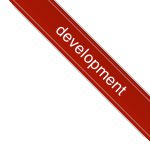Setting up a Child Theme using the BioShip Theme Framework as your Parent Theme is very easy and highly recommended for best practice development. The main reason being as with any Child Theme you can keep the Parent Theme Framework updated (allowing for improvements and fixes to the Framework to easily be installed) without losing your own file customizations and functions. As most websites require some kind of customization of this kind, being able to add and modify your Child Theme functions.php is the most basic of features that a Parent Theme should support.
In BioShip, to extend this support, all the core theme functions have been made "pluggable" (overrideable.) In other words each function declaration is wrapped in conditional function_exists checks to make this possible. So to override any function, simply place a modified copy of a function in your Child Theme's functions.php file, As WordPress intentionally loads this file before the Parent Theme's functions.php, the modified function will be loaded instead of the default Parent Theme (Framework) function. (for reference see Child Themes WordPress Codex.) (Note: Layout Hook changes are a possible exception as the hooks must already exist, see Layout Hooks section for further details on overriding these.)There are of course many other potential benefits to having a Child Theme, such as being able to override Templates, Javascript and CSS files - or any other files for that matter. BioShip's extensive file hierarchy allows you to do this for all theme files and templates (see the File Hierarchy and Template Hierarchy sections.) Layout hooks can also be modifyied for easy reordering, replacing or adding of page elements (again see Layout Hooks section.) Plus custom value filters can be used in your functions.php for even further possibilities (see Value Filters section.) While for simple designs these kinds of advanced customization will be unnecessary - as the existing functions are written to handle a wide variety of cases very well - having the easy option to override anything can remove makes custom theme development with BioShip a breeze.One-Click Child Theme Install
To make it even easier, BioShip has One-click Creation for Child Themes, so you can get customizing as soon as possible. Plus, BioShip auto-transfers your current Parent Theme Setting to your Child Theme when you first activate your it, so there is no need to set the same settings again if you are moving from using BioShip as a standalone Theme to using a Child Theme.
Visit your Theme Options page under the Wordpress admin Appearance menu. Enter a new Child Theme display name in the box to the right of the layer tabs and click Create Child Theme. The next page will show the creation result in the same space. Click the activate link there and you are now running your new Child Theme!
Manual Child Theme Install
Unzip your download of BioShip locally and upload the contents of the subdirectory /bioship/child/ via FTP to a subdirectory of your choice in the /wp-content/themes/ directory. (eg. /wp-content/themes/sweet-child-of-mine/)Before Activating: Optionally edit the Name Field of the Child Theme at the top of the style.css file in the directory you created. (Important Note: if you change this name later you will need to copy the saved Theme Options to the new one in the options table.) This will change the name of the active theme in your admin area. Once as desired, simply activate the new Child Theme from your Themes page and you're good to go!
Preview Child Theme Install
1. Follow either option above but do not activate yet. Instead, make sure you have Theme Theme Drive plugin installed and activated, and either:2a. Activate the Theme Test Drive for your Child Theme with Level 10 (administrator) privileges. Remember the theme test drive for the theme will be active until you disable it via this page! You can now access the Theme Options page under the Appearance menu or via the top Admin Bar.
or 2b. Use a querystring for a temporary preview of the Child Theme on any page, by adding ?theme=child-theme-slug to the page address URL in your browser window (where child-theme is your Child Theme's slug - a lowercase version of Child Theme name with spaces replaced by hyphens.)
For example, you can access the Theme Options manually in this temporary preview mode by going to one of the following URLs:
WordPress Customizer: /wp-admin/customize.php?theme=child-theme-slug
Titan Framework: /wp-admin/themes.php?page=bioship-options&theme=child-theme-slug
Options Framework: /wp-admin/themes.php?page=options-framework&theme=child-theme-slug
In this way you can create a new Child Theme skin for your site and activate it once you are satisfied with the new design result. Again, generally speaking, if you are the sole site admin of the site then option 2a is fine, otherwise you might want to go with 2b so that other site admins aren't confused by seeing the new in theme preview while you're developing with it.
Cloning Child Themes
You can also clone any existing Child Theme with one click at the top right of the Theme Options page for that Child Theme. This allows you to easily 'fork' an existing Child Theme for further development without affecting the live site display. All files and theme settings will be automatically copied to the new clone Child Theme directory on form submission. You can then activate the new Child Theme at any point from the Appearance > Themes page.
| ← Previous: Installation and Updates | Back to Documentation Index |
